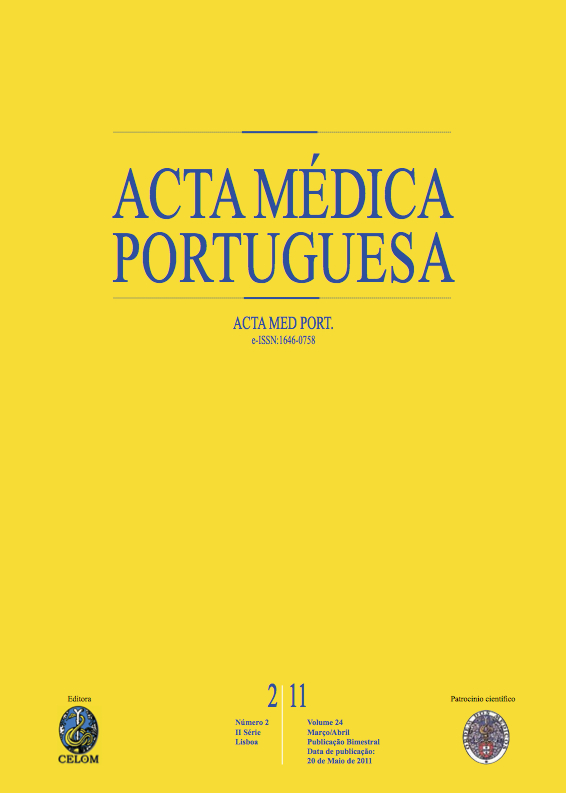Serum homocysteine concentrations in Portuguese young adults reference interval.
DOI:
https://doi.org/10.20344/amp.1622Abstract
Hyperhomocysteinemia has been shown to be an independent risk factor for cardiovascular disease. Assessing the reference intervals for homocysteine among young adults is a critical step in the process of preventing cardiovascular diseases later in life. This study aimed to identify reference intervals for total serum homocysteine concentration in young adults.The sample was composed of 469 (74.4% female) young adults (mean age 20.4 ± 2.1) who participated in an ongoing longitudinal study of apparently healthy undergraduate students registered in different academic years and different scientific areas in a Portuguese University, and coming from all regions of the country. Total homocysteine concentrations were determined and the data were analyzed employing the Hoffmann approach. This approach method has been widely used to evaluate reference intervals for various analytical parameters. Reference intervals (5th and 95th percentiles) for the total homocysteine concentration were first estimated by gender and since male and female reference intervals were similar, one reference interval for total homocysteine was estimated irrespective of gender.Reference intervals showed to be similar for both genders. The reference range, for homocysteine in young Portuguese adults, was 6.2-11.6 µmol/l, regardless of gender. Above 11.6 µmol/l surveillance should be considered in young adults.This is the first known study providing reference intervals for total homocysteine in young adults, based on a sample of Portuguese university students. The identification of a reference interval for total serum homocysteine concentration at these ages may help to identify those with a higher cardiovascular disease risk. Values above 11.6 µmol/L should lead physician concern and surveillance in adulthood.Downloads
Downloads
How to Cite
Issue
Section
License
All the articles published in the AMP are open access and comply with the requirements of funding agencies or academic institutions. The AMP is governed by the terms of the Creative Commons ‘Attribution – Non-Commercial Use - (CC-BY-NC)’ license, regarding the use by third parties.
It is the author’s responsibility to obtain approval for the reproduction of figures, tables, etc. from other publications.
Upon acceptance of an article for publication, the authors will be asked to complete the ICMJE “Copyright Liability and Copyright Sharing Statement “(http://www.actamedicaportuguesa.com/info/AMP-NormasPublicacao.pdf) and the “Declaration of Potential Conflicts of Interest” (http:// www.icmje.org/conflicts-of-interest). An e-mail will be sent to the corresponding author to acknowledge receipt of the manuscript.
After publication, the authors are authorised to make their articles available in repositories of their institutions of origin, as long as they always mention where they were published and according to the Creative Commons license.









